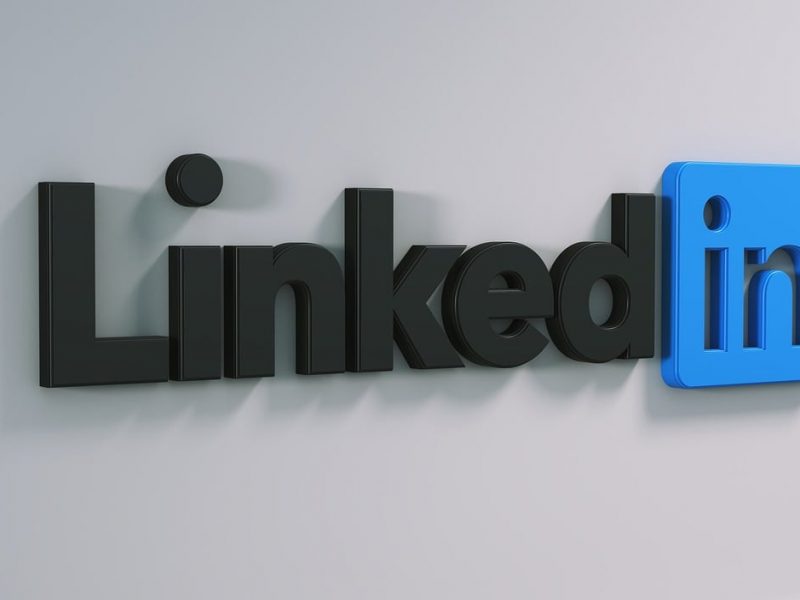In the dynamic world of digital marketing, LinkedIn stands out as a powerhouse for B2B advertising. With over 930 million members as of 2023 (LinkedIn), this platform offers an unparalleled opportunity to reach decision-makers and professionals across industries. Leveraging LinkedIn Ads can propel your marketing strategy to new heights, driving qualified leads and significant ROI. This comprehensive guide delves into the nuances of LinkedIn Ads, providing insights and strategies to help your business thrive in the competitive B2B landscape.
Why LinkedIn Ads?
Targeting Precision
LinkedIn’s targeting capabilities are its most significant asset. Unlike other social media platforms, LinkedIn allows advertisers to drill down into specific professional demographics, including job title, industry, company size, and seniority. This level of granularity ensures your ads reach the right audience, increasing the likelihood of engagement and conversion.
High-Quality Leads
According to a report by HubSpot, LinkedIn generates the highest visitor-to-lead conversion rate at 2.74%, almost three times higher than Facebook (0.77%) and Twitter (0.69%). This statistic underscores LinkedIn’s effectiveness in delivering high-quality leads that are more likely to convert into paying customers.
Types of LinkedIn Ads
LinkedIn offers a variety of ad formats, each designed to cater to different marketing goals and audience preferences. Understanding these formats is crucial to optimising your ad campaigns.
Sponsored Content
Sponsored Content appears directly in the LinkedIn feed, blending seamlessly with organic content. These ads can be single-image posts, video posts, or carousel ads, allowing for a diverse range of storytelling options. Sponsored Content is ideal for promoting thought leadership articles, webinars, or whitepapers, aiming to engage users in a non-intrusive manner.
Sponsored InMail
Sponsored InMail delivers personalised messages directly to LinkedIn members’ inboxes. This format boasts an impressive open rate of 52%, according to LinkedIn, making it an effective way to engage prospects with personalised offers or invitations. However, it’s essential to use this format judiciously to avoid being perceived as spammy.
Text Ads
Text Ads are simple yet effective, appearing in the sidebar or at the top of the LinkedIn feed. These ads consist of a short headline, a brief description, and a small image. Text Ads are cost-effective and can be an excellent way to drive traffic to your website or landing page.
Dynamic Ads
Dynamic Ads personalise the ad content to each viewer based on their LinkedIn profile information. These ads can highlight job opportunities, showcase content, or encourage followers. The personalisation aspect can significantly increase engagement rates, making Dynamic Ads a powerful tool for targeted marketing.
Video Ads
Video Ads on LinkedIn offer a compelling way to tell your brand story or demonstrate product features. According to LinkedIn, video content is 20 times more likely to be shared than other types of content. This format is particularly effective for capturing attention and conveying complex information succinctly.
Creating Effective LinkedIn Ads
Crafting Compelling Ad Copy
Your ad copy is the first point of contact with potential customers, so it must be compelling and concise. Highlight the value proposition clearly and include a strong call-to-action (CTA).
Utilising Eye-Catching Visuals
Visual content is crucial in grabbing the audience’s attention. Use high-quality images or videos that resonate with your target audience. LinkedIn reports that ads with images get 94% more total views than text-only ads.
A/B Testing
A/B testing involves running two versions of an ad to see which performs better. Test different headlines, images, and CTAs to identify the most effective combinations.
Budgeting and Bidding Strategies
Setting a Realistic Budget
Establishing a realistic budget is essential for a successful LinkedIn Ads campaign. LinkedIn operates on a bidding system, and costs can vary based on the competitiveness of your target audience. Start with a daily budget that you’re comfortable with and adjust based on performance.
Choosing the Right Bidding Strategy
LinkedIn offers several bidding options, including cost-per-click (CPC), cost-per-impression (CPM), and cost-per-send (CPS) for Sponsored InMail. CPC is ideal for driving traffic, while CPM is better for brand awareness. CPS can be effective for targeted engagement through InMail.
Measuring Success: Key Metrics
Tracking the right metrics is crucial to evaluating the success of your LinkedIn Ads campaign. Here are some key performance indicators (KPIs) to monitor:
Click-Through Rate (CTR)
CTR measures the number of clicks your ad receives divided by the number of impressions. A high CTR indicates that your ad is relevant and engaging to your target audience.
Conversion Rate
Conversion rate is the percentage of ad clicks that result in a desired action, such as filling out a form or making a purchase. This metric is critical for assessing the effectiveness of your ad in driving tangible outcomes.
Cost Per Conversion
This metric calculates the cost of acquiring a conversion, providing insight into the efficiency of your ad spend. Lowering your cost per conversion can significantly improve your ROI.
Engagement Rate
Engagement rate measures the interactions (likes, shares, comments) your ad receives. High engagement indicates that your content resonates with your audience, which can enhance brand visibility and trust.
Best Practices for LinkedIn Ads
Align Ads with Business Goals
Ensure your LinkedIn Ads align with your overarching business goals. Whether you aim to increase brand awareness, generate leads, or drive sales, your ad content and strategy should reflect these objectives.
Leverage LinkedIn Insights
Utilise LinkedIn’s analytics tools to gain insights into your audience and ad performance. LinkedIn Insights provides valuable data on demographics, engagement, and more, enabling you to refine your strategy for better results.
Regularly Optimise Campaigns
Continuous optimisation is key to maintaining the effectiveness of your LinkedIn Ads. Regularly review performance metrics and make necessary adjustments to improve outcomes. This could involve tweaking ad copy, adjusting targeting parameters, or reallocating budget.
Maintain Compliance
Adhere to LinkedIn’s advertising policies to avoid disruptions to your campaigns. Ensure your ads are truthful, non-discriminatory, and respect user privacy.
Case Studies: Success with LinkedIn Ads
HubSpot
HubSpot utilised LinkedIn Ads to promote its free CRM software, targeting small to medium-sized businesses. By leveraging LinkedIn’s precise targeting and Sponsored Content, HubSpot achieved a 400% increase in leads and a 45% reduction in cost per lead.
Adobe
Adobe launched a LinkedIn Ads campaign to promote its Adobe Creative Cloud to marketing professionals. Using a combination of Sponsored Content and Dynamic Ads, Adobe saw a 50% increase in engagement rates and a 30% increase in product trials.
Future Trends in LinkedIn Advertising
AI and Automation
Artificial intelligence (AI) and automation are set to revolutionise LinkedIn advertising. AI can help in predictive targeting, automatically adjusting bids, and personalising ad content, enhancing campaign efficiency and effectiveness.
Enhanced Analytics
The future will see more advanced analytics capabilities, providing deeper insights into audience behaviour and ad performance. These insights will enable marketers to make more informed decisions and optimise campaigns in real-time.
Interactive Content
Interactive content, such as polls and quizzes, is becoming increasingly popular on LinkedIn. These formats can boost engagement and provide valuable data on audience preferences and opinions.
Conclusion
LinkedIn Ads offer a powerful avenue for B2B marketers to connect with a highly targeted and engaged audience. By leveraging LinkedIn’s advanced targeting capabilities, diverse ad formats, and robust analytics, businesses can drive meaningful engagement, generate high-quality leads, and achieve a substantial return on investment.
Success in LinkedIn advertising hinges on understanding your audience, crafting compelling content, and continuously optimising your campaigns. As you navigate the evolving landscape of digital marketing, LinkedIn Ads should be a cornerstone of your strategy, unlocking new opportunities for growth and success.
References
- LinkedIn (2023). LinkedIn Official Site.
- HubSpot (2023). The Ultimate List of Marketing Statistics for 2023.



